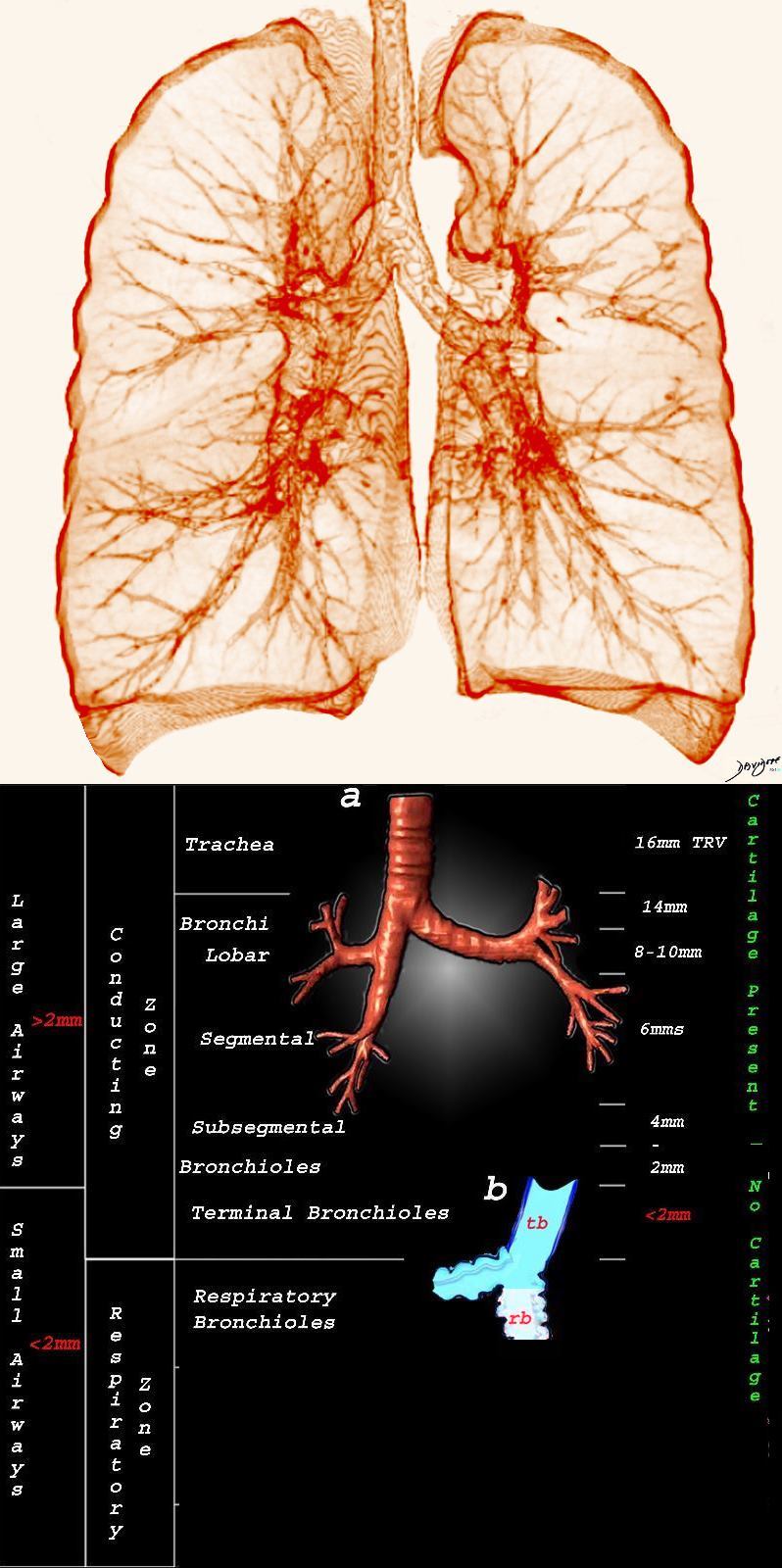Airways refer to the units of air conduction in the respiratory system, starting from the nose and mouth and extending down through the trachea, bronchi, and bronchioles, up to the terminal bronchioles allowing the passage of air to the alveoli where gas exchange occurs. The respiratory bronchioles have both transportation function and gas exchange function and hence are in a gray zone.
The pathogenesis in airway diseases typically involves inflammation, narrowing, or obstruction of the airways, which restricts airflow and can lead to symptoms like wheezing, coughing, shortness of breath, and reduced oxygen exchange.
These conditions can impair lung function, affecting the efficiency of breathing and causing symptoms that worsen with exertion.
Diagnosis of airway-related conditions includes clinical evaluation (e.g., listening for wheezes or crackles), imaging such as chest X-rays or CT scans, and pulmonary function tests (PFTs) to measure the extent of airflow obstruction.

